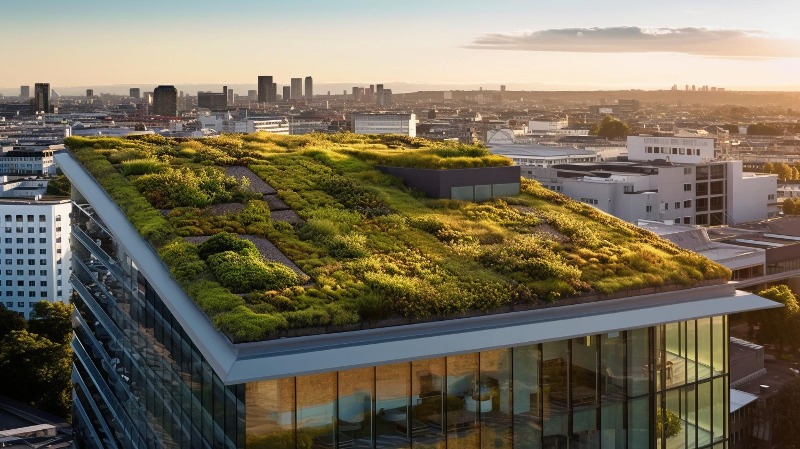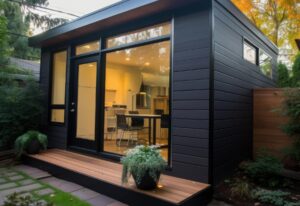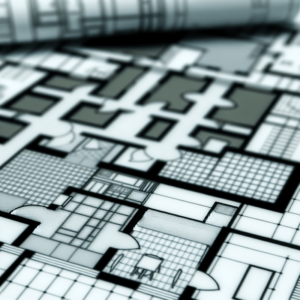When constructing an accessory dwelling unit (ADU), also known as a granny flat, in-law suite, or secondary dwelling unit, choosing the right roofing material is essential. The roof protects the structure from the elements and contributes to the overall energy efficiency and aesthetic appeal of the ADU. In this comprehensive guide, we’ll explore various roofing options for ADUs, their pros and cons, and factors to consider when making your decision.
Understanding the Importance of Roofing for ADUs
The roof is one of the most critical components of an ADU, as it safeguards the interior from rain, snow, wind, and extreme temperatures. A well-designed and properly installed roof can help reduce energy costs, improve the ADU’s durability, and enhance its overall appearance. With the rising popularity of ADUs due to the increasing cost of housing, it’s crucial to select a roofing material that meets your specific needs and budget.
Asphalt Shingles: A Budget-Friendly Choice
Asphalt shingles are the most popular and affordable roofing option for ADUs. They come in a variety of colors and styles, making them a versatile choice for many homeowners. Asphalt shingles are relatively easy to install and maintain, with an average lifespan of 20-30 years. They provide decent protection against the elements and are suitable for most climates, including the weather conditions prevalent in San Diego County.
Metal Roofing: Durability and Energy Efficiency
Metal roofing has gained popularity in recent years due to its durability, energy efficiency, and modern aesthetics. Metal roofs can last up to 50 years or more with proper maintenance, making them a long-term investment for ADU owners. They are excellent at reflecting sunlight, which can help reduce cooling costs during the summer months. Additionally, metal roofs are fire-resistant and can withstand high winds, making them a smart choice for areas prone to wildfires or severe weather events. In Santa Clara County, there has been a notable rise in metal roof installations for ADUs.
Flat Roofing Materials: TPO, EPDM, and PVC
Flat roofs are a common choice for ADUs, particularly in urban areas like San Francisco, where space is limited. The most popular flat roofing materials include:
- TPO (Thermoplastic Polyolefin)
- EPDM (Ethylene Propylene Diene Monomer)
- PVC (Polyvinyl Chloride)
These materials are known for their durability, energy efficiency, and resistance to UV rays and punctures. Flat roofs also provide the opportunity to create a rooftop deck or green space, enhancing the functionality and aesthetics of the ADU.
Green Roofing Options for Eco-Conscious ADU Owners
Solar Tiles and Shingles
For environmentally conscious ADU owners, solar tiles and shingles offer a sustainable roofing solution. These innovative products combine the functionality of traditional roofing materials with the energy-generating capabilities of solar panels. By installing solar tiles or shingles, you can reduce your reliance on grid electricity and lower your carbon footprint. As California leads the nation in renewable energy usage, opting for a solar roof on your ADU can contribute to the state’s green initiatives.
Green Roofs and Living Roofs
Another eco-friendly option for ADU roofing is a green roof or living roof. These roofs are partially or completely covered with vegetation, which helps to absorb rainwater, reduce urban heat island effects, and improve air quality. Green roofs also provide insulation, lowering energy costs for heating and cooling. While they require more maintenance than traditional roofing materials, the environmental benefits and unique aesthetic appeal make them an attractive choice for some ADU owners.
Factors to Consider When Choosing an ADU Roof
When selecting a roofing material for your ADU, consider the following factors:
| Factor | Description |
|---|---|
| Climate | Choose a roofing material that can withstand the specific weather conditions in your area, such as high temperatures, heavy rainfall, or snowfall. |
| Energy Efficiency | Opt for roofing materials with high energy efficiency ratings to help reduce heating and cooling costs. |
| Durability | Consider the lifespan and durability of the roofing material to ensure long-term protection for your ADU. |
| Maintenance | Evaluate the maintenance requirements of each roofing material, as some may require more upkeep than others. |
| Aesthetics | Choose a roofing material that complements the architectural style of your ADU and main residence. |
| Budget | Consider the initial cost of the roofing material, as well as long-term expenses such as maintenance and energy costs. |
Building Codes and Regulations for ADU Roofing
When planning your ADU roofing project, it’s essential to familiarize yourself with local building codes and regulations. California has strict building codes, and each county may have additional requirements. For example, in Orange County, there are specific guidelines for ADU roofing materials and installation methods. Working with a knowledgeable local roofing contractor can help ensure that your ADU roof complies with all applicable regulations.
Conclusion
Choosing the right roofing material for your accessory dwelling unit is a crucial decision that impacts the structure’s durability, energy efficiency, and overall appearance. By carefully considering factors such as climate, budget, and maintenance requirements, you can select a roofing option that meets your specific needs. Whether you opt for traditional asphalt shingles, durable metal roofing, or eco-friendly solar tiles, investing in a quality roof for your ADU will provide long-lasting protection and value for years to come.








